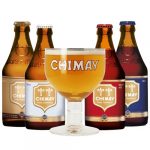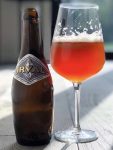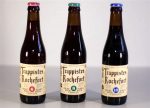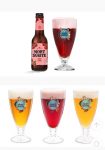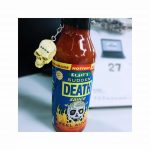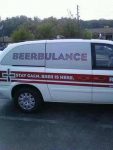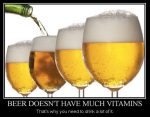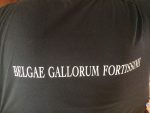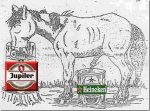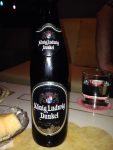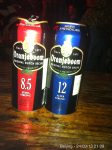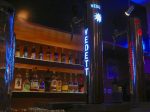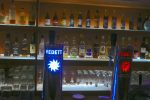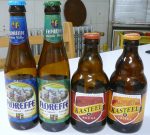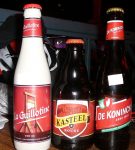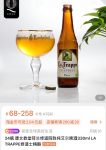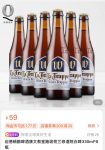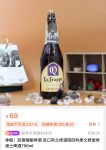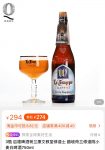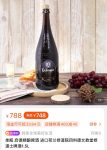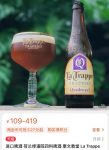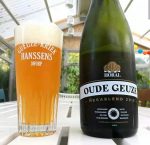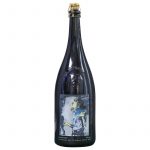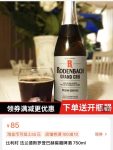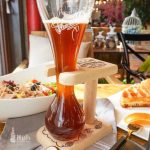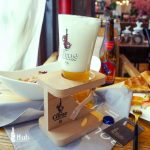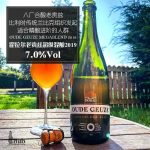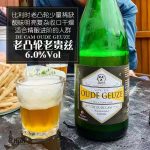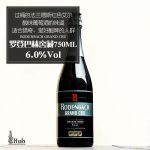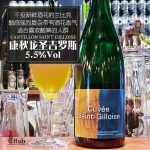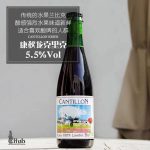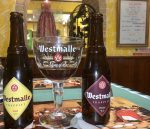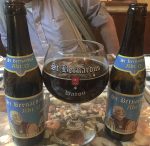How to find your way
Many types of Belgian beers exists such as Trappist, Abbey Beers, Witbier, Lambic, Geuze, and fruited beers and more. In this post an exhaustive introduction to the different beers. A short ABC!
- How to torture a Belgian!
- My official sign
When trying different Belgian beers, don’t forget to use the right glass, every beer has its own glass! Santé!
Below: from several sources. See here one, the original French version: “Le petit guide des grandes bières!”, 8 mars 2019.
And also: Belgian Beer Styles
Trappist
Trappist is undoubtedly the best known and most famous high fermentation beer in Belgium and is made by five Trappist breweries: Westmalle, Westvleteren, Chimay, Orval and Rochefort. Globally there are only 11 recognized Trappist breweries. Achel used to be the sixth Trappist beer of Belgium until it lost its official status in 2021 after the last monks left the abbey. The quality of the beer hasn’t changed though!
To be considered and certified as a Trappist brewery, brewing must occur in or near an active monastery belonging to the Cistercian order (a certain Catholic order of monks and nuns). Brewing must be done by, or under the supervision of, the community of monks, and the revenues have to be used to support the abbey or fund charitable works. Additionally, all recognized Trappist beers carry the ‘Authentic Trappist Product’ logo on the bottle, which means the beer was brewed in a Cistercian abbey.
Other than the unique brewing environment, Trappist beers tend to be high in alcohol % and rich in aromas, and are most commonly found in, “dubbel” or “tripel” varieties. The terms dubbel, trippel, and quadrupel have been used since at least 1956 by the abbey of Westmalle, and although their origin is uncertain, they are often used to designate the strength of the beer, with quadrupel being stronger than trippel, which itself is more potent than dubbel.
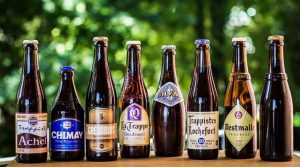 From left to right: the ex-Trappist Achel from Belgium, the Belgian Chimay, the Austrian Gregorius, the Dutch La Trappe, and the Belgian Orval, Rochefort, Westmalle and Westvleteren.
From left to right: the ex-Trappist Achel from Belgium, the Belgian Chimay, the Austrian Gregorius, the Dutch La Trappe, and the Belgian Orval, Rochefort, Westmalle and Westvleteren.
Abbey Beer
The designation “abbey beers” (Bières d’Abbaye or Abdijbier) was originally applied to any monastic or monastic-style beer. After introducing an official Trappist beer designation by the International Trappist Association in 1997, it meant products similar in style or presentation to monastic beers. In other words, Abbey beers are similar to Trappist beers, but can be produced by non-Trappist monasteries – such as Benedictine or other orders, can be made by a commercial brewery in partnership with an extant monastery, or be branded with the name of a defunct abbey by a commercial brewer.
Conditions still apply to be called an “Abbey beer” in Belgium: the brewery has to have a demonstrable, historical connection to the Abbey it takes its name from. Conditions are less strict than for Trappist beers though, so you can say that every Trappist is an Abbey beer, but not every Abbey beer is a Trappist!
Witbier
‘Witbier’ (wheat or white beer) is a kind of unfermented beer that has gained a lot of popularity worldwide lately. Using a significant proportion of wheat to barley (higher than in most other beers), as well as adding herbs such as coriander and orange zest, give witbiers a pleasant fresh aroma and crisp taste.
The town of Hoegaarden is inseparably connected with witbier, which has been brewed here since human records began. The first written sources that link this sour, cloudy brew to the town of Hoegaarden date from 1318.
As an unfiltered beer, it will also re-ferment in the bottle, and when served in a glass, has a cloudy appearance, due to the heavy concentration of suspended yeast and wheat proteins, which give it a mild and slightly sour taste. With similar alcohol % as a pils, witbier is a refreshing and satisfying drink for any occasion.
Lambic, Geuze, and Fruited Beers
Lambics are another Belgian classic made from spontaneous fermentation. This means that instead of adding yeast to the hops and barley to start the fermentation process, fermentation is started by natural bacteria in the air, which is only possible in certain places. The bacteria responsible for this fermentation are uniquely tied to location, one of the bacteria used in this process is even called Brettanomyces bruxellensis, as it’s typically found and produced in and around Brussels.
Not only due to location, but also the complexity and mystery of the process, Lambic beers are only produced by just a handful of companies. The product’s scarcity is necessitated by a time-consuming method of production that few fully understand and can require several years between kettle and shelf.
The name “lambic” covers a bit more than just a single type of beer. It’s more commonly used to refer to all of the beer styles made from a spontaneously fermented lambic base. This includes not just that simple “lambic,” also known as unblended lambic, but also Gueuze, a blend of a young and mature lambic beer, and fruited lambic variants where the fruit is jammed right into the barrel, kickstarting fermentation that eats up all of the fruit’s sugars leaving a fruity, richly colored beer.
Read “A Brief History of Lambic in Belgium”, one of the many articles talking about this special beer.
And also: Cantillon, Brasserie et Musée Bruxellois de la Gueuze.
Flanders Red / Flanders Brown
Flanders red beer are indigenous to the northern half of Belgium and are available in two varieties: red and brown (AKA oud bruin).
Despite their Belgian origin, Flanders red ales likely inspired the tart blended porters that once dominated the English beer market. Eugene Rodenbach, credited with the style’s inception, brought knowledge of porter blending techniques back to Belgium after a stint studying brewing in England.
Flanders brown ales are similar beers but tend to be a bit maltier. Fruit flavors trend toward plums, figs, and dates more so than red berries, and there tends to be a bit less vinegar-like sourness.
The different families of beers
The Triple: The Triple is a stronger blond beer than its little sisters, the Single and the Double. “Triple” is one of the denominations of abbey beers. It is called Triple because of the three stages of fermentation it goes through: a primary, a secondary and a third directly in the bottle.
Ex: Chimay, Kasteel, Westmalle, Chouffe, Karmeliet
The IPA: IPA (Indian Pale Ale) is a beer from the United Kingdom originally intended for English troops in India in the 18th century. It is a beer with a fairly high alcohol content and lots of hops.
Ex: Tennent’s IPA, Lagunitas IPA, Hitachino Nest Dai Dai IPA, La Chouffe IPA
The Pale Ale: Pale Ale beers are quite different from their IPA cousins. They come from different countries and are made from a malt called “Pale”, they are amber and rather red beers. They are made using ancient roasting techniques from England.
Ex: Delirium Tremens (Belgian Pale Ale), Sierra Nevada PA
The Lager: Lager is a low fermentation beer. It can be blond, amber or brown. It is a beer of German origin dating from the 15th century.
Ex: Hitachino Nest Lager, Tennent’s 1885 Lager, Heineken, Tsingtao
Stout: Stout is a beer with a high content of roasted beans. It has a smoky or even grilled taste (which can be similar to that of coffee) and a very dark color. We find the origins of Stout in Ireland and more widely in the United Kingdom.
Ex: Tennent’s Stout, Guinness


